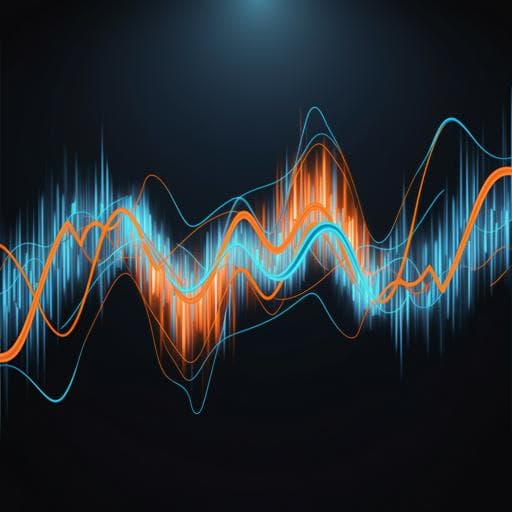
Political Science
Exploring the dynamics of corruption perceptions in sustained anti-corruption campaigns: a survey experiment in China
Y. Pan, Z. Shu, et al.
This study conducted by Yating Pan, Zhan Shu, and Zhipeng Ye explores how sustained anti-corruption campaigns influence individuals' perceptions of corruption. The research reveals that people continuously integrate new information rather than relying on memory alone, showing a complex relationship between past and recent investigations.
~3 min • Beginner • English
Introduction
The paper examines how sustained anti-corruption campaigns shape public perceptions of corruption. While corruption undermines government performance and political trust, governments increasingly launch anti-corruption campaigns. Corruption perception—people’s assessment of corruption—is critical for political legitimacy and policy design. Prior research shows mixed temporal effects of investigations: short-run exposure raises perceived corruption, while long-run enforcement may reduce it. Yet, little is known about perception formation during sustained campaigns with year-to-year fluctuations in investigations. The study asks: How do different trends in annual investigation numbers affect perceptions? How do individuals update perceptions when new information arrives? Using a survey experiment in China, the authors investigate whether perceptions follow a memory-based model (dominated by the most recent information) or an online evaluation model (integrating prior trends and recent information). They anticipate perceptions are formed online and updated with both past trends and recent investigation numbers.
Literature Review
The review distinguishes objective corruption indicators (e.g., numbers disciplined, investigations, convictions) from subjective indicators (perceptions). Perceptions, while sometimes biased and not perfectly aligned with actual corruption, are widely used and generally correlated with corruption levels. Factors shaping perceptions include: place of residence (socioeconomic/cultural context); information sources (personal experience, mass media, grapevine). Most citizens lack direct corruption experience and rely on media; both formal media and informal grapevine can bias perceptions. In authoritarian contexts like China, state-controlled media may lower perceived corruption, whereas grapevine may increase it. Anti-corruption efforts can have nuanced effects: they may ultimately reduce perceived corruption, but intensive investigations can increase perceptions in the short term by exposing scandals. Two evaluation models are contrasted: (1) Memory-based evaluation—judgments formed upon request, heavily influenced by most recent information (recency effect); (2) Online evaluation—people continuously integrate new information into existing evaluations; sequence and prior beliefs matter. In sustained campaigns, annual investigations fluctuate, creating upward, downward, or flat trends that can differentially shape perceptions. The authors hypothesize: H1: Perceptions positively correlate with the past trend in investigation numbers (supporting online over memory-based evaluation). H2: Recent investigations that are unexpected can reverse perceptions based on past trends.
Methodology
Design: Online survey experiment conducted in early 2022 in China. To control for prior attitudes and knowledge about China’s campaign, the vignette used a fictitious country with proportional figures scaled from China’s reported data. The fictitious country had a population of 480,000, 16,700 government-affiliated staff, and 1,330 corruption cases investigated since the campaign began 9 years earlier. Participants were shown nine news reports (one per year) with annual investigation counts, each followed by an attention check.
Participants: Recruited via Sina Weibo by advertising in comments of popular news posts, with a ¥2 incentive. 2,626 volunteers completed the questionnaire hosted on https://www.wjx.cn/. Exclusions: 111 completed too quickly (<1 min; <30 s for control) and 198 failed attention checks, yielding N=2,317 (52.0% male; ages 16–65, mean 30.25, median 29). Sample represents Weibo news consumers.
Experimental conditions: 2×2 between-subjects design crossing past trend (upward vs downward) with recent-year number (high vs low), plus an undisclosed control (no annual figures). Total investigations were held constant across all five groups. Participants were randomly assigned to one of five conditions:
- Condition 1: Continuous upward trend (2013–2021 ascending; 2013=20, …, 2021=275).
- Condition 2: Unexpected decrease (upward 2013–2020; drop in 2021 to low: 2013=20, …, 2020=308, 2021=20).
- Condition 3: Continuous downward trend (2013–2021 descending; 2013=275, …, 2021=20).
- Condition 4: Unexpected increase (downward 2013–2020; rise in 2021 to high: 2013=250, …, 2020=20, 2021=250).
- Condition 5: Undisclosed (no annual figures shown).
Outcome measure: After treatments, respondents rated current perceived government corruption: “To what extent do you perceive the government to be corrupt currently after the 9-year anti-corruption effort?” on a 1 (not corrupt at all) to 5 (extremely corrupt) scale. Covariates: gender (male=1, female=0) and age (continuous). Analytical strategy: descriptive comparisons, chi-square/ANOVA checks for balance, and OLS regressions with dummies for past trend (upward=1) and recent number (high=1), plus their interaction.
Key Findings
Balance checks showed no significant differences across groups in gender (χ²(4)=1.36, p=0.85) or age (F(4,2312)=0.71, p=0.59). Perceived corruption differed significantly across conditions (χ²=2072.56, df=16, p<0.001). Mean perceived corruption by condition: Upward (Cond 1)=4.34 (SD=0.48); Unexpected decrease (Cond 2)=4.06 (SD=1.25); Downward (Cond 3)=1.42 (SD=0.51); Unexpected increase (Cond 4)=4.15 (SD=0.76); Undisclosed (Cond 5)=2.42 (SD=1.11).
- Hypothesis 1: Supported. Perceptions are jointly shaped by past trend and recent numbers. High perceptions occur when the past trend is upward or the recent number is high; low perceptions when both are downward/low.
- Hypothesis 2: Supported. Recent unexpected numbers revise perceptions based on past trends. Compared to continuous downward (mean=1.42), an unexpected increase yields much higher perceived corruption (mean=4.15), a marginal reverse effect of 2.73. Compared to continuous upward (mean=4.34), an unexpected decrease yields 4.06 (difference −0.28), indicating a smaller reversal.
Regression (OLS): With dependent variable perceived corruption and controls for gender and age:
- Model 1: Past trend (upward) β=1.32, p<0.01.
- Model 2: Recent number (high) β=1.46, p<0.01.
- Model 3: Both included: Past trend β=1.39, p<0.01; Recent number β=1.52, p<0.01.
- Model 4: Interaction Past trend × Recent number β=−2.39, p<0.01, indicating that unexpected recent values can reverse perceptions formed by prior trends. Interaction plots show stronger effects of recent numbers when the past trend was downward.
Discussion
Findings indicate that in sustained anti-corruption campaigns, citizens form corruption perceptions via online evaluation: they integrate past trends and update with new information. Merely reporting total investigations or only recent figures misses the dynamic nature of perception formation. Continuous downward trends foster perceptions of reduced corruption (suggesting successful clean-up), while continuous upward trends signal prevalent corruption. Unexpected new information can revise perceptions asymmetrically: an unexpected increase after a downward trend substantially elevates perceived corruption; an unexpected decrease after an upward trend produces a smaller reduction, suggesting stickiness of negative perceptions and potential interpretation differences of sudden decreases. These dynamics help explain how anti-corruption communication can inadvertently elevate perceived corruption and affect regime legitimacy in the short run, and they underscore the importance of sequencing and transparency in information release.
Conclusion
The study shows that in sustained anti-corruption campaigns, fluctuations in annual investigation numbers influence corruption perceptions through an online evaluation process. Perceptions reflect both past trends and the latest information: upward trends increase perceived corruption; downward trends lower it; unexpected recent figures can reverse trend-based perceptions, with increases having a particularly strong effect. The results expand literature beyond short- versus long-term effects by highlighting the role of year-to-year dynamics and information sequencing. Policy implications include initiating effective measures early and carefully considering how annual figures are communicated to avoid counterproductive spikes in perceived corruption. The findings may generalize to other countries with sustained campaigns and public reporting of anti-corruption data. Future research should examine additional fluctuation patterns (e.g., multi-year unexpected decreases) that might further reduce perceived corruption and test generalizability across populations and contexts.
Limitations
The study did not control for respondents’ corruption experiences or educational background, which could shape tolerance and information processing. The sample—recruited from Weibo commenters—represents active social media news consumers rather than the general Chinese population, limiting generalizability. The experiment’s vignette used a fictitious country to avoid confounds from China-specific attitudes, potentially reducing external validity. Real-world media emphasize sensational details that may heighten perceived corruption in ways not fully captured here. Further work is needed to assess results in more representative samples and more realistic media environments.
Related Publications
Explore these studies to deepen your understanding of the subject.







